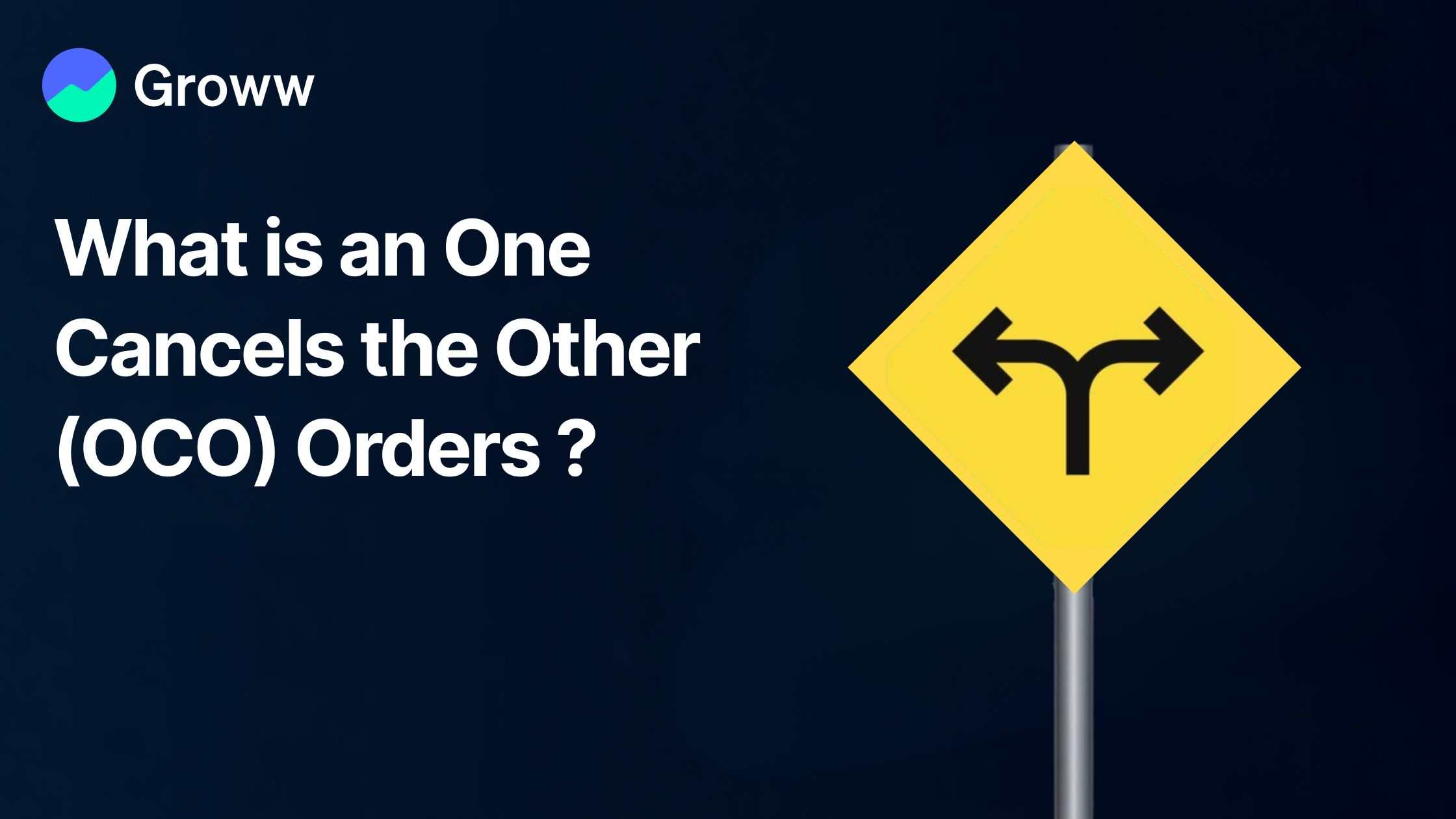One Cancels the Other (OCO) Orders

One Cancels the Other (OCO) orders are a vital risk management strategy. This is a trading tool where two conditional orders are placed together. If one order is executed, then the other will be cancelled automatically in this system.
OCO order - meaning: Placing one stop order and one limit order (or two orders that are similar) gives traders greater control over the situation. When the limit or stop price is achieved and one of the orders is executed, the other will be cancelled automatically.
How OCO Orders Work
Here are some pointers to help you understand OCO orders in greater detail.
- These orders are helpful in volatile markets where prices move swiftly. They enable traders to suitably manage risks and capitalise on opportunities in the market without the need for constant tracking.
- An OCO order combines a stop order and a limit order in most cases, with most traders setting exit and entry points for transactions.
- They are used in multiple markets, including cryptocurrency, due to their volatile nature.
- These orders may also be used for trading retracements and breakouts and for restricting risk exposure. It also helps manage emotions better while trading, lowering the occurrence of any bias-driven errors.
- Transactions can be automated, and this lowers the need for continuous monitoring.
- The stop-loss order is used for limiting any potential losses by buying/selling an asset when the price touches any predetermined level. This is a safety net for preventing any trade from becoming excessively risky.
- Another component is the limit order, which sets a price level at which you wish to buy/sell any asset for locking in your profits. This helps take advantage of favourable price movements. You should choose the price levels based on your risk tolerance levels.
Example of Using OCO Orders
Now that you know the meaning of OCO, the following example will help you understand the concept better.
Suppose you are trading a stock priced at ₹100, and you feel that it may either fall or rise considerably. In this case, you can place a limit order to sell the stock at ₹105 in case of a potential increase in prices. Simultaneously, you may place a stop-loss order for selling the stock at ₹95 to restrict your potential losses in case of a drop in prices.
Scenario 1
If the stock price rises to ₹105 or more, then the take-profit order will be activated, and the shares will be sold at this price to earn a profit. The stop-loss order will be canceled automatically.
Scenario 2
If the stock price falls to ₹95, then the stop-loss order will be activated, and the shares will be sold at this price, thereby restricting the losses. Hence, the take-profit order will be canceled automatically.
Benefits of OCO Orders in Risk Management
Here are some of the key advantages of OCO orders:
- They automate major trading decisions, eliminating the need for constant tracking and helping traders manage emotions better.
- OCO orders are helpful for better risk management while participating more efficiently in the market. Hence, they can be useful strategies for both experienced and amateur traders since they lower the risks of erroneously reacting to market developments.
- Another advantage is that they can help you tackle opposing market conditions seamlessly, preparing for both downward and upward movement in prices.
- The dual-order system also helps optimise profits better while restricting losses simultaneously.
Common Mistakes
Here are some common errors that you should avoid while using OCO orders:
- Not understanding the basic mechanism: You should endeavour to grasp the concept of two simultaneous orders and why they are not placed separately.
- Incorrect price level setting: Make sure you extensively analyze the market for working out the suitable price levels for the limit and stop-loss orders. Take the support and resistance levels into account, along with market trends.
- Not testing in trial environments: Practice placing these orders in a simulated/demo environment before deploying them in the live market.
- Ignoring market conditions: Your trading strategies should be periodically reviewed and aligned with market conditions. Make sure you tweak the OCO parameters whenever required and set realistic expectations in terms of your loss/profit thresholds.
Other mistakes include neglecting the time in force, which should be the same for both orders in the pair, and also emotionally placing or adjusting these orders. At the same time, you should ideally use these orders in combination with other risk management strategies, without depending only on them. Diversification or hedging can be a good addition to your overall risk management template in conjunction with OCO orders.
Concluding Notes
OCO orders can be a valuable risk management tool if you use them strategically, adjusting as per market conditions and your specific goals and correctly setting price levels. Remember that the core objective is lowering risks and maximising the chances of making a profit. Hence, these orders can be valuable options for helping you strike that balance between profitability and risks while safeguarding your portfolio and entering the market successfully. They can be especially helpful in volatile markets.